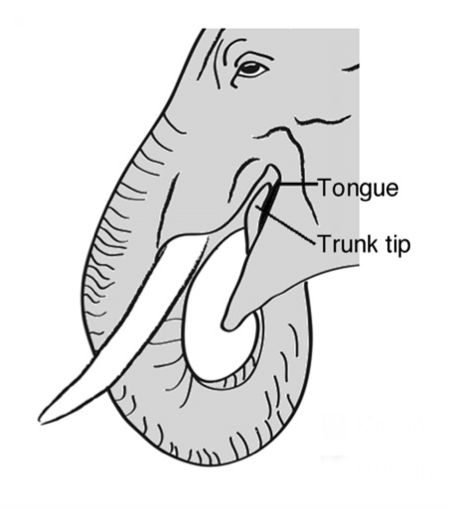Video: This Elephant Learned to Speak Korean
Koshik, an Asian elephant at a South Korean zoo, learned to uncannily mimic five Korean words by stuffing his trunk in his mouth
![]()
Last week, we reported on a beluga whale discovered off the coast of California that had learned to make noises that sound just like human speech. Well, an Asian elephant named Koshik that lives at the Everland Zoo in South Korea has done one better. Even if you don’t speak Korean, you’ll be impressed by the video above: He’s learned to convincingly mimic five different words of the notoriously difficult language while stuffing his trunk in his mouth.
As described in paper published today in Current Biology, zoo staff say that Koshik is capable of uncannily emulating five commonly used Korean words: annyong (hello), anja (sit down), aniya (no), nuo (lie down) and choah (good). They first discovered that the now 22-year-old elephant could do this in 2006—and the cognitive researchers from the University of Vienna and elsewhere who wrote the study on Koshik’s speech say that the the circumstances of his adolescence might account for this unusual ability.
Koshik was the only elephant in the zoo for the first five years of his life, a period crucial for elephant bonding and socialization. “We suggest that Koshik started to adapt his vocalizations to his human companions to strengthen social affiliation, something that is also seen in other vocal-learning species—and in very special cases, also across species,” Angela Stoeger of the University of Vienna, the lead author of the paper, said in a statement. During this formative stage, Koshik was so desperate to connect with others that he learned to mimic the words most commonly said to him by trainers and zoo visitors, in order to generate a response from them.
Whatever his motivation, Koshik’s way of accurately replicating these five words is especially unusual. The elephant vocal tract is radically larger than a human’s, so to match the pitch and timbre of human speech, Koshik stuffs his trunk in his mouth, altering the shape of the vocal tract as he makes the words.

Koshik mimics human words by stuffing his trunk in his mouth, making it more closely resemble the human vocal tract. Image via Current Biology
Several bird species, including parrots and mynah birds, have been known to mimic human speech. There are anecdotal accounts of domesticated elephants doing so as well—Batyr, a longtime resident of a Kazakhstan zoo, was said to have a vocabulary of more than 20 Russian and Kazakh phrases—but his abilities were never scientifically tested. Critics said that his supposed abilities merely reflected the fact that observers expected to hear the words after being told that he was capable of making them.
In this case, the researchers performed a number of tests in order to definitively determine whether Koshik actually mimics human words. To start, they played audio recordings of Koshik’s words to native Korean speakers and asked them to write down what they heard. “We found a high agreement concerning the overall meaning, and even the Korean spelling of Koshik’s imitations,” Stoeger said. They also acoustically evaluated his speech and found that, in terms of frequency, it differed from typical wild elephant calls and much more closely matched those of Koshik’s human trainer, Kim-Jong Kap.
Of course, there’s no evidence Koshik actually understands the meaning of his words, just that saying them can elicit the attention of people. Nevertheless, the fact that such a highly intelligent species has been found to be physically capable, at least, of making human-like noises, should be encouraging. After years of efforts to train apes to say words, scientists have come to the conclusion that although they may be smart enough to learn meaning (as demonstrated with sign language), they lack the fine motor control of the vocal tract necessary for speech. If elephants are physically capable of mimicking words, it leaves open the possibility that we could someday teach them to speak, too.
/https://tf-cmsv2-smithsonianmag-media.s3.amazonaws.com/accounts/headshot/joseph-stromberg-240.jpg)
/https://tf-cmsv2-smithsonianmag-media.s3.amazonaws.com/accounts/headshot/joseph-stromberg-240.jpg)